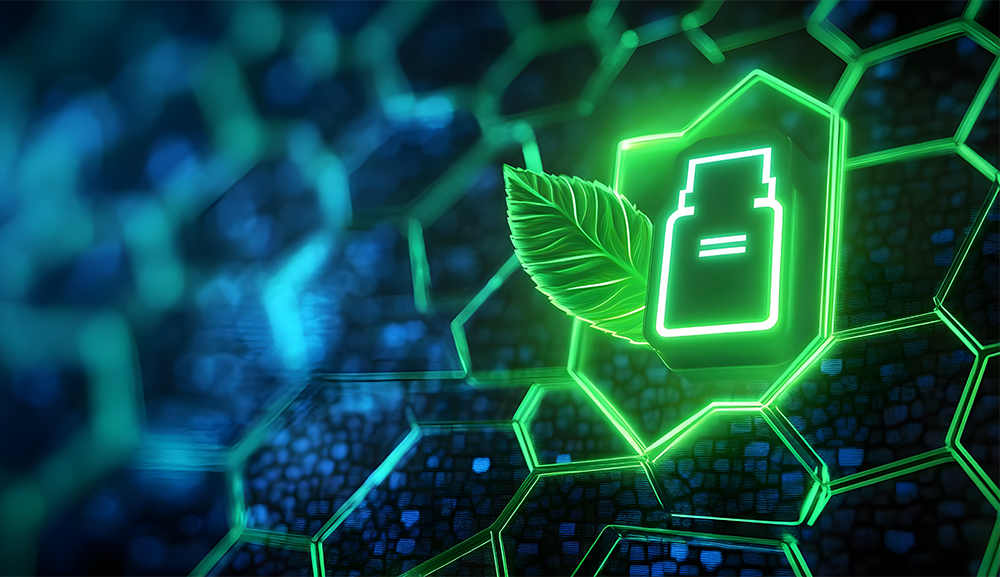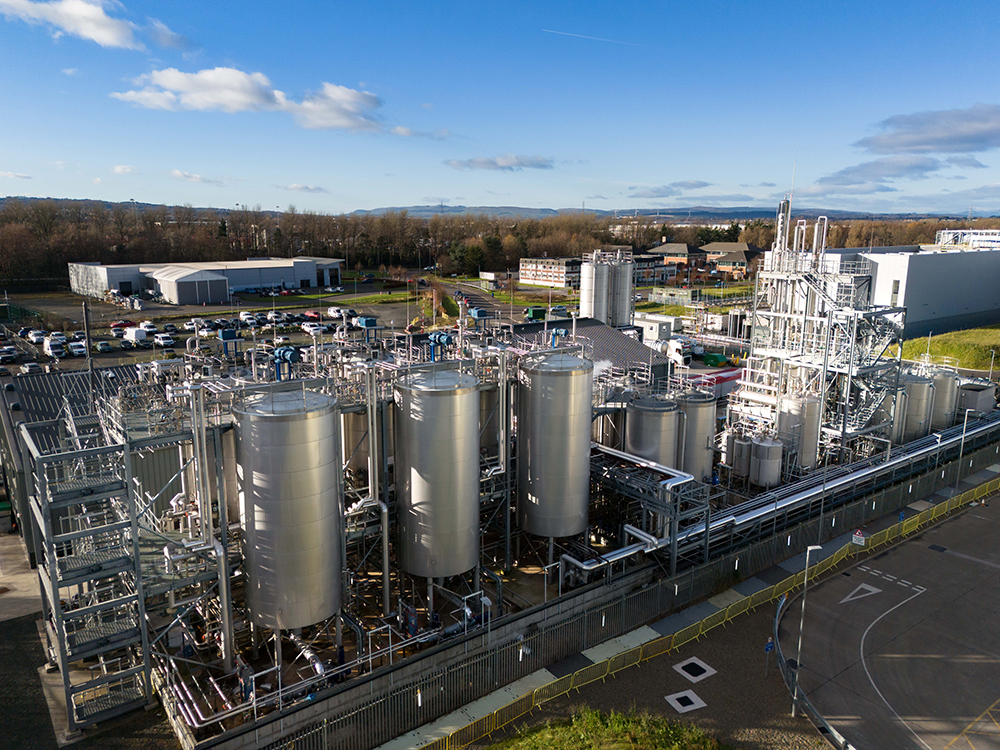Many processes which were once considered waste can now be valorised. Dr Alexander Krajete, CEO of emissions treatment specialist Krajete, explores how waste gases can be repurposed into useful products.
missions valorisation pathways
Valorisation is the process of increasing the value of something. Valorisation can occur through two primary approaches: chemical and biological conversion.
Chemical valorisation relies on catalytic processes and elevated temperatures to transform waste gases into useful compounds. While chemical valorisation can achieve high conversion efficiencies, they typically require significant energy input, which can limit their sustainability unless powered by renewable energy sources.
Biological valorisation, in contrast, utilises microorganisms or enzymatic pathways to convert emissions under mildly elevated conditions. These bioprocesses often have lower energy demands and can operate under non-extreme conditions, making them attractive for decentralised applications. However, biological systems have slower reaction rates and require careful optimisation of microbial metabolism to maximise yield.
Both approaches present viable solutions, and hybrid chemical-biological systems are also emerging as promising strategies to enhance conversion efficiency while reducing energy requirements.
Revalorising carbon emissions
The potential for carbon dioxide valorisation is vast. Carbon is an essential element in most industrial products and forms the backbone of many chemicals. Polymers, for example, rely heavily on carbon, and with global plastic production reaching 413.8 million metric tonnes in 2023, finding ways to recycle carbon from industrial waste gases is increasingly important.
The chemical industry is exploring solutions to this problem by integrating waste carbon into the production of materials such as polypropylene carbonates, polycarbonates and polyurethanes.
Companies such as Fortum and Covestro have already implemented strategies to incorporate recycled carbon into their production processes, reducing environmental impact while improving carbon circularity.
Agribusiness plays a key role in both consuming and producing carbon dioxide. Every year, around 230 million tonnes of CO₂ are used globally, with the fertiliser industry accounting for 130 million tonnes of that figure.
However, this sector is also a significant emitter, with mineral fertiliser production responsible for approximately 2.1 per cent of global CO₂ emissions. The potential to valorise these emissions remains largely untapped, yet if industries that both emit and consume CO₂ could be integrated into circular systems, waste and costs could be significantly reduced.
Developing such solutions requires large-scale investment, but the long-term benefits could reshape industrial carbon management.
One of the most successful applications of bacterial valorisation is the process developed by LanzaTech, which has commercialised a waste gas-to-ethanol technology. This system efficiently converts carbon monoxide from steel mill off-gas into fuel-grade ethanol using the bacterium Clostridium autoethanogenum.
Given that carbon monoxide makes up a substantial portion of steel mill emissions and synthesis gas, this process represents a major advancement in industrial carbon recycling.
Research has demonstrated that ethanol produced through LanzaTech’s system results in greenhouse gas emissions that are 60 per cent lower than that of conventional fossil gasoline, with biomass-based ethanol achieving close to 90 per cent emission reductions
Revalorising waste for bioenergy
Methane, a by-product of fossil fuel production and landfill decomposition, is a potent greenhouse gas — but it also represents an untapped energy resource, offering a major opportunity to reduce our dependence on fossil fuels.
Biogas plants convert organic matter into gas through a fermentation process. The resulting gas mixture is composed mainly of energy-rich methane and CO2.
In these plants, microbial communities are fed with agricultural waste, manure, wastewater, and other organic matter. The process in a biogas plant mirrors natural methanogenesis, but at an accelerated and controlled pace.
Biogas can be used directly in cogeneration plants to produce electricity and heat, or it can be purified into biomethane and injected into the national gas network, where it can be used to generate power, heat or fuel.
Switzerland is a leader in biogas technology, with over 100 biogas plants currently in operation. The number of agricultural biogas plants in the country is also steadily increasing. In 2019, Switzerland managed to reduce methane emissions by over 50,000 tons of CO2 equivalent by utilising approximately 1 million tons of manure.
Many countries, particularly those that do not produce oil, face significant challenges in securing stable energy supplies. Biogas offers a locally sourced alternative that can alleviate these concerns.
Africa stands to gain significantly from biogas production. Lake Kivu, located between Rwanda and the Democratic Republic of Congo, naturally generates biogas as anaerobic microorganisms break down organic matter at depth. The lake serves as both a major source and reservoir of methane, and methods for methane extraction are being explored to harness its potential.
Revalorising nitrogen oxide emissions
While emissions valorisation can be used to increase circular economy and reduce greenhouse gas emissions, it can also be used to protect human health.
Nitrogen oxides (NOₓ), which include nitrogen dioxide (NO₂) and nitric oxide (NO), are by-products of agriculture, electricity generation, industrial activities and residential combustion. These gases pollute the air and have significant respiratory impacts.
NO2, known as a precursor pollutant, plays a key role in the formation of ground-level ozone, which harms humans. Exposure to NO₂ increases inflammation of the airways and reduces lung function, particularly in vulnerable populations. Given its prevalence in urban and industrial environments, there is a growing need to mitigate its impact.
One of the biggest sources of NO2 emissions comes from the production of nitric acid for fertilisers. Here again, the largest emitter has the potential to become the biggest consumer, reducing virgin resource dependency while increasing profit. In this case, air pollution can be converted into plant fertiliser.
One development in this space is a project by Crop Intellect involving R-Leaf, a specially developed photocatalyst that captures nitrogen oxides from the air. When combined with nitrogen-fixing bacteria, these captured pollutants are transformed into nitrates, a crucial nutrient for plants.
Preliminary trials have shown promising results, suggesting that this method could reduce the need for synthetic fertilisers in wheat cultivation by up to 50 per cent, while increasing yields by 5 per cent.
A solution can also be found at the source of the problem itself, through the use of zeolite technology.
Zeolites, composed of aluminium, silicon and oxygen, have highly porous structures that make them effective in absorbing nitrogen oxides. Their large surface area, intricate channels and high thermal and hydrothermal stability allow for the efficient capture of NOX, which can then be repurposed.
At Krajete, we are applying this concept by using zeolite technology to capture nitrogen oxides and convert them into valuable resources such as fertiliser. This technology can reduce emissions to as low as 1 ppm.
Power plants, another major NOX emitter, can also use zeolite-based systems to remove NOX from flue gases and convert them into industrial-grade nitrates, while in the chemical manufacturing sector, captured nitrogen oxides can be repurposed into fertilisers or other useful chemical products.
The future for valorised emissions
By transforming emissions from waste into valuable resources, valorisation offers a powerful tool for reducing environmental impact and supporting a circular economy.
Whether through chemical or biological methods, industries can repurpose greenhouse gases into useful products, reducing pollution while creating economic opportunities.
As advancements in emissions valorisation continue, integrating these solutions at scale will be key to achieving sustainable industrial practices and mitigating climate change.











